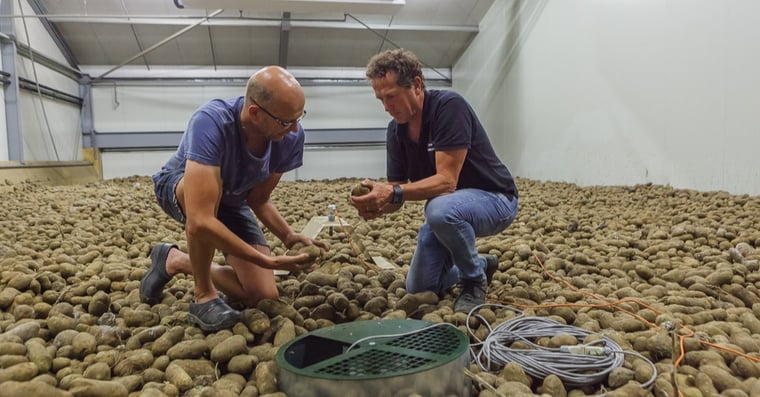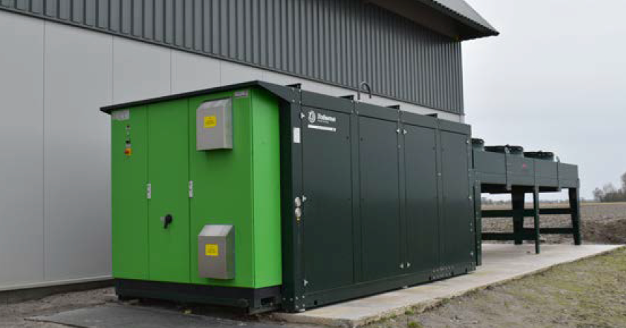
In order to avoid making wrong decisions and wrong choices when investing in a storehouse, it is sensible to consult knowledgeable and experienced advisors.
The 2 secrets everybody should know before buying a potato storage solution
In order to avoid making wrong decisions and wrong choices when investing in a storehouse, it is sensible to consult knowledgeable and experienced advisors. The knowledge and experience of fellow potato storehouse keepers in the area is also very valuable. They often have learned the hard way, and a lot can be learned from mistakes. No doubt they have tips they are willing to share.
Contact practical experts and experienced suppliers
When investing in a storehouse, it is important to find a reliable, experienced and expert supplier. A storehouse is a long-term investment. It is therefore advisable to look far ahead and build a construction that is durable. A miscalculation in the design process is easily made. For example, opting for insufficient ventilation capacity, space, insulation or the wrong layout or location for equipment can cost a lot of money. Here, too, the saying ‘you get what you pay for’ applies. Cooling installations, for example, are available in several versions and from many suppliers. However, an installation for French fries potatoes must meet completely different requirements for onion storage.
Focus on important factors
When purchasing storage equipment, it is good to take a number of factors into account. Check what air exchange capacity per cubic metre (m3) of product is offered in order to match the counter-pressure of the stored product. That is the aforementioned 100 cubic metres of air per cubic metre of potatoes per hour at a counter-pressure of 150 Pascal for bulk storage. Furthermore, it is important to check how many sensors for measuring temperature, relative humidity and CO2 are offered with a complete system. As mentioned before, for optimal storage results it is very important to carry out measurements in several places.

An important question, for example, is ‘how quickly can it cool the product down? It is also important to check what (specific) cooling capacity is offered and at what storage temperature, evaporation temperature and outdoor conditions it works. An important question, for example, is ‘how quickly can it cool the product down?’ Is this, for example, an installation of 100 kilowatts (70W/ton of product) at a storage temperature of 4 degrees Celcius and an average outside temperature of 15 degrees Celsius, which can cool down potatoes from 10 to 6 degrees Celsius in 10 days, or is it perhaps much less?
Want to read more about the 2 secrets everybody should know before buying a potato storage solution?
Download our free e-book now!


